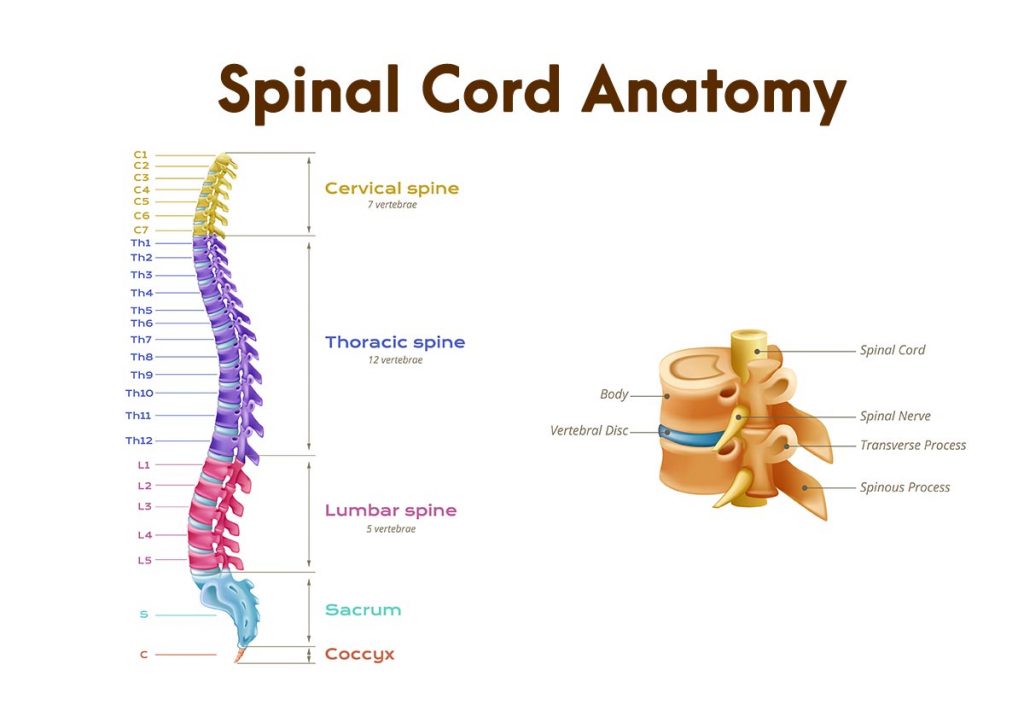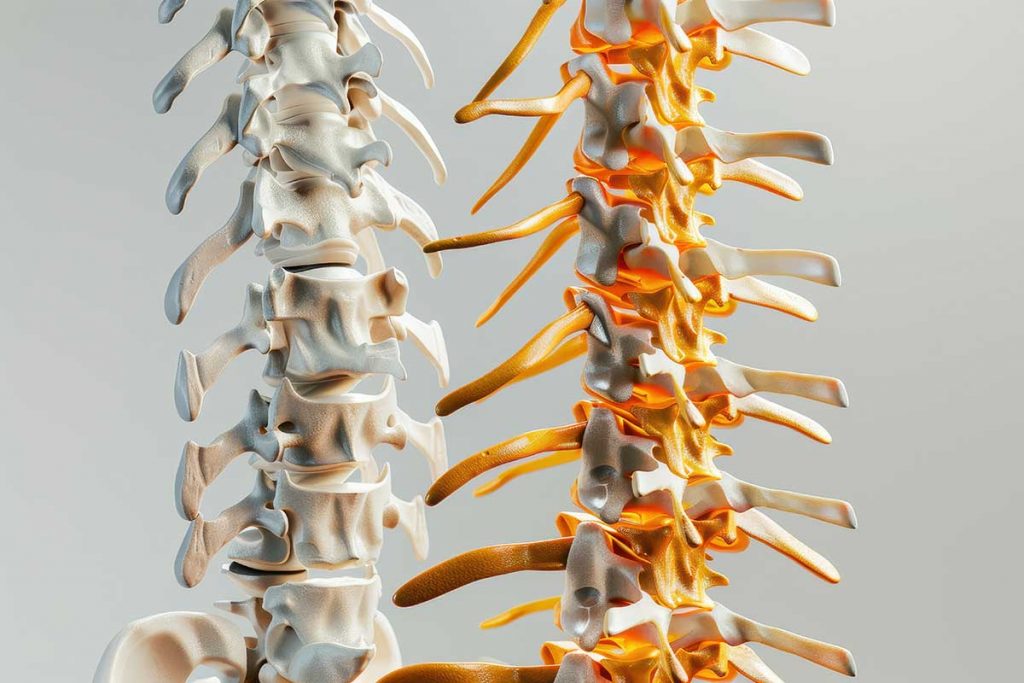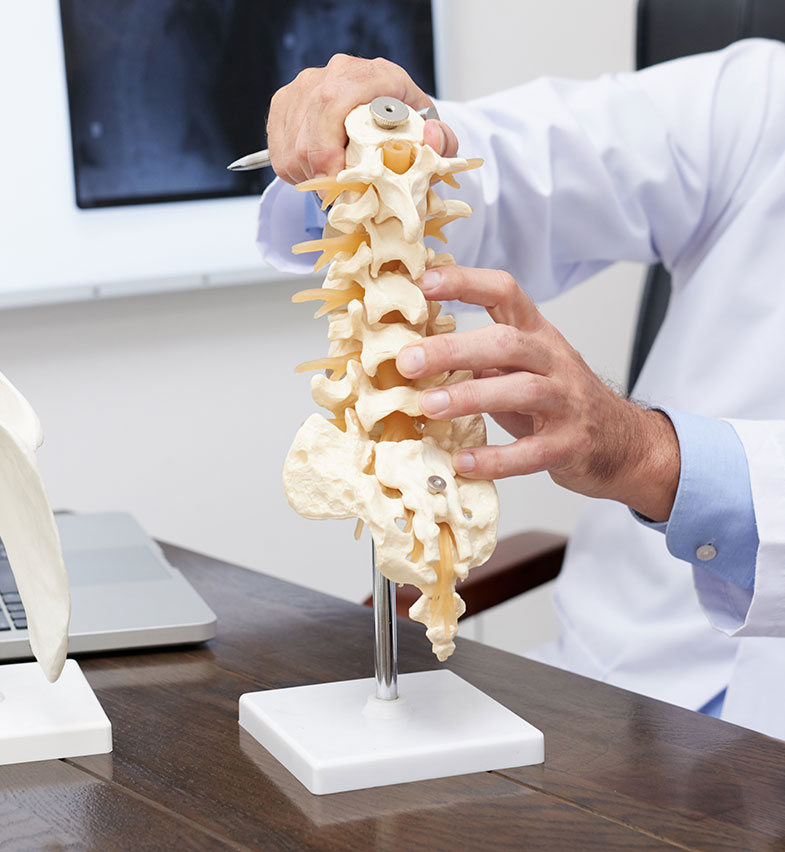Table of Contents
A nerve root is a complex structure that extends directly from the spinal cord and is not just a simple bundle of nerve fibers. It is a sophisticated system that sends and receives signals throughout the body, akin to an intricate electrical network. The potential for nerve root damage or inflammation to cause severe pain and other issues like muscle weakness underscores the complexity of the human body. Diagnosing the precise nerve root issue can be challenging due to the potential for the pain to manifest in a different location than the nerve root, emphasizing the need for professional medical advice.

Read the post “10 Surprising Facts About the Spinal Cord“
Composition of the Nerve Roots
What is a nerve? A neuron has two parts: the soma (cell body) and the neurite (branch). The neurites that send signals away from the cell body are called axons. A nerve is a structure made up of axons.
So, what is a nerve root? The nerve root is the initial part of the nerve. There are two types of nerves: cranial nerves and spinal nerves. While both are part of the peripheral nervous system, they have different compositions and structures and serve different purposes. The spinal nerve roots extend along the length of the spine, and inflammation, injury and damage to these roots are more likely compared to the cranial nerve roots.
Spinal Nerve Roots
Spinal nerves are pairs of nerves that emerge from the spinal cord as rootlets. The rootlets join to form two nerve roots that manage sensory and motor information, acting as an intermediary between the peripheral and central nervous systems.

Nerve fibers extend from the dorsal and ventral spinal cord roots. The dorsal root is made of sensory axons that send information from the peripheral receptors to the central nervous system, and the ventral roots are motor nerves that transmit information from the brain and spinal cord to muscles. There are 31 pairs of spinal nerves.
- Eight cervical pairs
- 12 thoracic pairs
- Five lumbar pairs
- Five sacral pairs
- One coccygeal nerve pair
Understanding Nerve Root Pain
Nerve root pain is due to nerves being compressed or damaged. When the condition occurs in the spine, it is called radiculopathy. There are various reasons spinal cord root pain develops, and understanding radiculopathy can help identify and manage nerve root pain. Following are some common reasons nerve root pain develops.
1. Herniated Disc
A herniated disc can put pressure on nerve roots when the disc center ruptures and bulges through the outer layer. This can compress the nerves exiting the spinal cord. Disc herniation is a common cause of pain in the lumbar nerve roots.
2. Stenosis
Spinal stenosis is a spinal canal narrowing, placing pressure on the spinal cord and nerve roots. It can occur anywhere along the spine but commonly causes pain due to pressure on the cervical or lumbar nerve roots.
3. Bone Spurs
Bone spurs (osteophytes) that develop on the vertebrae can narrow the opening where nerve roots exit the spinal cord when they grow inwards. The constricting of the spinal canal puts pressure on nerve roots, causing stiffness and pain.
4. Arthritis
Osteoarthritis or rheumatoid arthritis can cause many issues impacting nerve roots. Arthritis can lead to spinal stenosis, inflammation that compresses nerves and the growth of osteophytes. Arthritis, especially rheumatoid arthritis, can also release chemical mediators that cause nerve sensitivity. This leads to allodynia, a pain response to doing something like walking that is not usually painful. Arthritis can also damage nerve fibers due to the bone damage incurred.
5. Infection
Shingles (herpes zoster) is a viral infection causing inflammation of the nerve roots, affecting the skin, underlying tissues, and nerve endings. It is a viral disease in which the varicella-zoster virus is reactivated and can affect the cranial or dorsal root ganglia. The virus travels from a nerve root on the spine to the skin. Polio is another example of a spinal viral infection.
6. Trauma
Nerve roots can be injured. For example, a spinal avulsion is a severe injury in which one or more spinal nerve roots or other tissues are torn away from the spinal cord. High-energy vehicle accidents are a common cause of nerve root damage. Nerve roots may also be split into two pieces or stretched.
There are other ways nerve roots are damaged or inflamed, such as tumors, metabolic diseases, and various autoimmune disorders, but the ones mentioned are some of the most common.
Location Matters
The location of the nerve root that is inflamed or damaged determines where you will experience pain, weakness or numbness. For example, in lumbar spinal stenosis, a burning pain in the lower back may radiate down the buttocks, and there may be numbness, tingling and leg weakness.

In another example, the nerve pain associated with bone spurs depends on where the osteophytes develop. If the bone spur is pressing on the lower back or spinal nerve roots, there could be a dull pain in the lower back that worsens when walking or standing, or there may be muscle spasms and weakness, loss of coordination and a stinging sensation in the legs.
If you are experiencing pain of an unknown origin that does not improve after several days, it is important to see a doctor for an assessment. The pain may not be experienced at the nerve root location.
Sources
- https://www.ncbi.nlm.nih.gov/books/NBK551652/
- https://pmc.ncbi.nlm.nih.gov/articles/PMC9410283/
- https://www.ncbi.nlm.nih.gov/books/NBK544267/
- https://www.ncbi.nlm.nih.gov/books/NBK542218/
- https://www.ncbi.nlm.nih.gov/books/NBK560878/
- https://www.niams.nih.gov/health-topics/spinal-stenosis
- https://www.nhs.uk/conditions/osteophyte/
- https://pmc.ncbi.nlm.nih.gov/articles/PMC1794504/
- https://pmc.ncbi.nlm.nih.gov/articles/PMC3381480/
- https://pmc.ncbi.nlm.nih.gov/articles/PMC10289968/
- https://www.ncbi.nlm.nih.gov/books/NBK441824/
